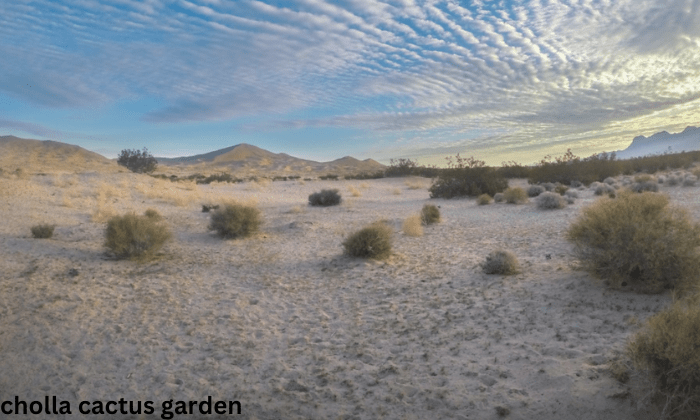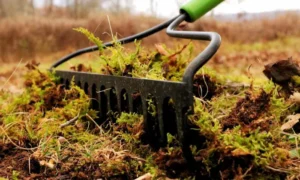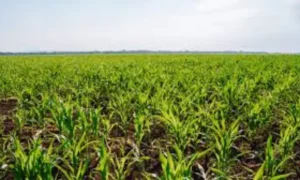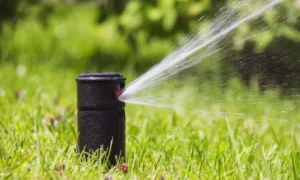
Low Maintenance Front Yard Landscaping Tips and Ideas
Low Maintenance front yard landscaping plays a crucial role in enhancing the overall aesthetic appeal of a property while also serving functional purposes. It’s often
Nestled within the heart of Joshua Tree National Park in California, the Cholla Cactus Garden stands as a remarkable testament to the unique and harsh beauty of the desert ecosystem. This distinctive garden is a must-visit destination for nature enthusiasts, photographers, and anyone seeking to immerse themselves in the captivating world of desert flora.
Visitors to the Cholla Cactus Garden can take leisurely strolls along well-maintained pathways, offering an up-close view of these remarkable cacti. The golden hour, shortly before sunset, is an especially magical time to visit, as the setting sun bathes the landscape in a warm, ethereal glow, enhancing the already stunning vistas. Whether you’re a botany enthusiast, a desert aficionado, or simply a traveler in search of awe-inspiring landscapes, the Cholla Cactus Garden is a remarkable natural wonder that promises a unique and unforgettable experience.

The cholla cacti, scientifically known as Cylindropuntia, are a fascinating group of cacti native to North and Central America, with their origins dating back thousands of years. These remarkable cacti have adapted to thrive in the arid and often harsh desert environments of the southwestern United States, Mexico, and other parts of the American continent.
Cholla cacti have a long history of significance among the indigenous peoples of the region, who utilized various parts of the plant for survival. The spines, for example, were used as needles, and the woody stems were employed in construction and as a source of fuel. The cholla cacti’s adaptation to such extreme conditions, including limited water availability and high temperatures, is a testament to their resilience and evolutionary success.
Cholla cacti are easily recognizable due to their distinctive appearance and unique features:
Cholla cacti play a crucial role in the desert ecosystem.
In conclusion, the enchanting world of cholla cacti is not only a visual marvel but also a testament to nature’s adaptability and resilience. These cacti have a rich history, unique characteristics, and ecological significance in the desert ecosystem, making them a captivating and integral part of the desert landscapes they inhabit.
The Cholla Cactus Garden is located within the enchanting expanse of Joshua Tree National Park in Southern California, USA. This iconic park spans across the border of two distinct desert ecosystems: the Mojave Desert and the Colorado Desert, creating a unique and diverse landscape. The Cholla Cactus Garden is one of the park’s most popular attractions and is situated within the boundaries of Joshua Tree National Park, offering visitors a chance to immerse themselves in the captivating beauty of the desert.
Visiting the Cholla Cactus Garden within Joshua Tree National Park is a remarkable experience, offering a glimpse into the mesmerizing world of desert flora. It’s essential to plan your trip carefully, follow park guidelines, and respect the fragile desert environment to ensure a memorable and respectful visit.
Cholla cacti thrive in Joshua Tree National Park and the broader Mojave Desert ecosystem due to a combination of specific environmental factors that make this region ideal for their growth:
Cholla cacti have evolved several remarkable adaptations that enable them to not only survive but thrive in harsh desert conditions:
The remarkable adaptations and ability to thrive in extreme desert conditions make cholla cacti a vital component of the Mojave Desert ecosystem and a striking feature of Joshua Tree National Park’s unique landscape. Their resilience serves as a testament to nature’s ability to adapt and flourish in challenging environments.
By following these tips and safety precautions, you can fully enjoy the mesmerizing beauty of the Cholla Cactus Garden while ensuring your own safety and the preservation of this unique desert ecosystem.
While the Cholla Cactus Garden is dominated by the iconic cholla cacti, it is also home to a variety of other plant species that have adapted to the desert environment. Some of the notable plant species you may encounter include:
The Cholla Cactus Garden and the surrounding desert ecosystem provide habitat for a variety of wildlife species. While wildlife sightings can be unpredictable, here are some of the animals you might encounter during your visit:
Remember to maintain a respectful distance from wildlife and observe them without causing undue stress or disturbance. Wildlife encounters in the Cholla Cactus Garden can be a memorable and enriching part of your visit, adding to the unique charm of this desert ecosystem.
The Cholla Cactus Garden offers a wealth of photography opportunities due to its captivating and unique aesthetic appeal. Here’s why photographers are drawn to this remarkable desert landscape:
Cholla cacti have made their mark in various forms of art and cultural expressions, reflecting their enduring allure.
Overall, the aesthetic appeal of cholla cacti transcends their physical presence in the desert, influencing art, culture, and the creative imagination of those who encounter them. Whether through the lens of a camera or the strokes of an artist’s brush, cholla cacti continue to captivate and inspire.
Caring for cholla cacti at home can be a rewarding experience, but it’s important to understand their unique needs and requirements. Here are some tips on how to care for cholla cacti:
If you have the space and conditions to create a cholla cactus garden in your yard, here’s how to get started:
Creating a cholla cactus garden can be a beautiful and low-maintenance way to showcase these stunning desert plants while providing them with the right conditions to thrive. Just remember to handle them with care due to their spiny nature and provide the appropriate care to maintain their health and beauty.
The Cholla Cactus Garden, situated within Joshua Tree National Park, undergoes captivating transformations throughout the year, offering visitors a seasonal wonderland to explore.
While the Cholla Cactus Garden itself may not host specific annual events or festivals, it is an integral part of the larger Joshua Tree National Park, which occasionally organizes events and programs for visitors to enjoy. Some of these events may indirectly enhance the experience of visiting the Cholla Cactus Garden:
While the Cholla Cactus Garden itself remains a serene and timeless destination, the annual events and seasonal changes within Joshua Tree National Park provide opportunities for visitors to engage with this desert wonderland in different ways, from appreciating its natural beauty to participating in educational and recreational activities.
Cholla cacti hold cultural significance among various Indigenous peoples of the southwestern United States and Mexico. They have been utilized for a range of purposes, and their cultural importance is reflected in traditional practices and beliefs.
Holla cacti have inspired folklore and stories that reflect their intriguing and sometimes mystical nature.
These myths and stories surrounding cholla cacti reflect the deep connection between Indigenous cultures and the natural world, as well as the complexities and challenges of life in the desert. While some narratives may carry warnings or cautionary elements, others celebrate the cacti’s role as a symbol of survival and the enduring spirit of the desert ecosystem.
Cholla cacti, like many desert species, face various threats to their survival. These threats are often exacerbated by factors such as climate change and human activities.
Efforts to preserve cholla cacti and their desert ecosystems are critical to their long-term survival.
Efforts to address the conservation challenges facing cholla cacti are collaborative and multidimensional, involving the cooperation of government agencies, conservation organizations, local communities, and the public. The goal is to ensure that these remarkable desert plants continue to thrive and contribute to the unique beauty and biodiversity of desert ecosystems.
Exploring beyond the Cholla Cactus Garden in Joshua Tree National Park opens up a world of natural wonders and unique attractions. Here are some nearby highlights to consider visiting:
If you’re interested in expanding your exploration beyond Joshua Tree National Park, there are several day trip options to nearby attractions and towns:
Exploring beyond the Cholla Cactus Garden and Joshua Tree National Park allows you to immerse yourself in the diverse landscapes, culture, and attractions of the Southern California desert region. Whether you choose nearby park highlights or venture out to surrounding areas, there’s much to discover in this desert wonderland.
Cholla cacti have a history of traditional and medicinal uses among Indigenous peoples of the southwestern United States and Mexico. While their medicinal properties have been utilized for generations, it’s essential to note that modern scientific research on these uses is limited. Here are some traditional applications:
While traditional uses of cholla cacti have been passed down through generations, modern scientific research on their potential medicinal properties is still emerging. Here are some areas of modern research and discovery:
It’s important to note that while these initial findings are promising, further research is needed to fully understand the potential medicinal applications of cholla cacti and to determine appropriate dosages and safety guidelines. As with any natural remedy, it is essential to consult with healthcare professionals and rely on evidence-based practices for medical conditions.
Q1: Where Is The Cholla Cactus Garden Located?
A1: The Cholla Cactus Garden is located in Joshua Tree National Park, which is situated in southeastern California, USA.
Q2: What Makes The Cholla Cactus Garden Unique?
A2: The Cholla Cactus Garden is unique for its dense concentration of teddybear cholla cacti (Cylindropuntia bigelovii), creating a striking and otherworldly landscape. The garden is especially popular for its beauty during sunrise and sunset.
Q3: How Do I Get To The Cholla Cactus Garden Within Joshua Tree National Park?
A3: To reach the Cholla Cactus Garden, you can drive along the Pinto Basin Road in Joshua Tree National Park. It is well-marked, and you’ll find parking nearby.
Q4: Is There An Entrance Fee To Access The Cholla Cactus Garden?
A4: Yes, Joshua Tree National Park does have an entrance fee. It’s best to check the official National Park Service website for the most up-to-date information on entrance fees.
Q5: What Is The Best Time To Visit The Cholla Cactus Garden?
A5: The Cholla Cactus Garden is particularly beautiful during sunrise and sunset when the soft sunlight illuminates the cacti, creating stunning photo opportunities. However, it can be visited at any time during the park’s operating hours.
Q6: Are There Any Safety Precautions I Should Take When Visiting The Cholla Cactus Garden?
A6: Yes, it’s important to stay on designated paths and not touch or disturb the cacti. Teddybear cholla cacti have sharp spines that can easily attach to clothing and skin. Be sure to watch your step and be cautious while exploring the area.
Q7: Can I Bring Pets To The Cholla Cactus Garden?
A7: No, pets are not allowed on the trails or in the Cholla Cactus Garden within Joshua Tree National Park. This rule is in place to protect the delicate desert ecosystem.
Q8: Are There Any Guided Tours Or Ranger Programs At The Cholla Cactus Garden?
A8: The National Park Service often offers ranger-led programs and guided tours within Joshua Tree National Park. Check the park’s website or visitor center for information on any scheduled programs during your visit.
Q9: Can I Camp At The Cholla Cactus Garden?
A9: Camping is not permitted at the Cholla Cactus Garden itself. However, there are campgrounds within Joshua Tree National Park where you can stay overnight. Make sure to check availability and reservation requirements in advance.
Q10: Are There Restroom Facilities Near The Cholla Cactus Garden?
A10: Yes, there are restroom facilities at the nearby visitor centers and campgrounds within Joshua Tree National Park, but not specifically at the Cholla Cactus Garden itself.

Low Maintenance front yard landscaping plays a crucial role in enhancing the overall aesthetic appeal of a property while also serving functional purposes. It’s often

How to get rid of moss in your lawn can be a persistent problem, often appearing as a dense, green carpet that outcompetes grass for

Lawn fungus represents a significant challenge for homeowners and landscape professionals, impacting the aesthetic and health of lawns. These fungal infections can manifest as unsightly

Best time to water lawn and maintaining a lush, green lawn often involves more than just regular mowing. One crucial aspect of lawn care is

Ensuring optimal grass growth is crucial for maintaining a lush and healthy lawn. One of the key factors in achieving this is using the right

In the bustling metropolis of the sprinkler repair los angeles, where the sun shines almost year-round and the risk of fires is a constant concern,

Robert’s Complete Care has a proven track record of providing creative, high-quality lawn care Whittier services, CA area.
Copyright © 2023. All rights reserved Robert's Complete Care | Powered by Localpro1.